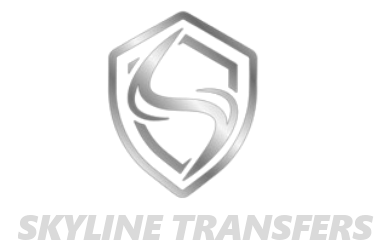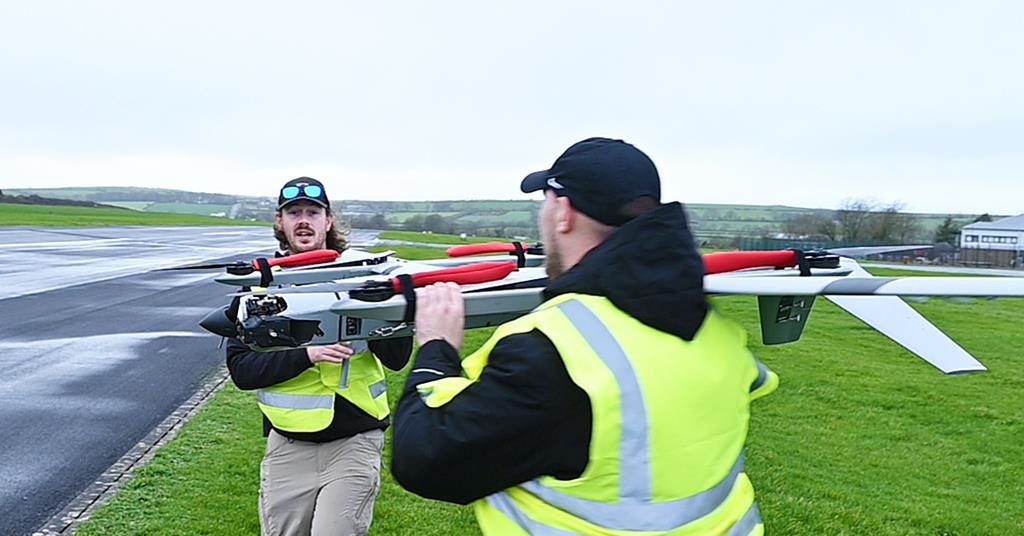London Gatwick turns on SmartStand trial alongside EasyJet | News
Company
Legal Links
Contact
- +44 7947 753363
- contact@skylineairporttransfers.co.uk
- 6 Walsall Street Bilston Wolverhampton WV14 0AT
Recent Posts
© Skyline Airport Transfers. Created by![]() Beaphoenix WebDesign ltd
Beaphoenix WebDesign ltd
Popular Locations:
Birmingham: Aston, Bournville, Edgbaston, Erdington, Great Barr, Hall Green, Handsworth, Harborne, Northfield, Quinton, Soho, Sutton Coldfield, Amblecote, Brierley Hill, Coseley, Cradley, Gornal, Halesowen, Kingswinford, Lye, Netherton, Sedgley, Stourbridge, Quarry Bank, Bearwood, Blackheath, Cradley Heath, Great Bridge, Old Hill, Rowley Regis, Smethwick, Tipton, Tividale, Wednesbury, West Bromwich, Balsall Common, Bickenhill, Castle Bromwich, Chelmsley Wood, Dorridge, Elmdon, Hampton in Arden, Kingshurst, Knowle, Marston Green, Meriden, Monkspath, Hockley Heath, Shirley, Aldridge, Birchills, Bloxwich, Brownhills, Darlaston, Leamore, Palfrey, Pelsall, Pheasey, Shelfield, Streetly, Willenhall, Bilston, Blakenhall, Bushbury, Compton, Ettingshall, Heath Town, Oxley, Penn, Tettenhall, Wednesfield, Burntwood, Lichfield, Cannock, Rugeley, KIDDERMINSTER, Brierly Hill,
STOURPORT-ON-SEVERN
Coventry: Allesley, Binley, Keresley, Stoke, Tile Hill
Leicester: Abbey Rise, Ashton Green, Aylestone, Beaumont Leys, Bede Island, Belgrave, Blackfriars, Braunstone, Braunstone Frith, Bradgate Heights, Clarendon Park, Crown Hills, Dane Hills, Evington, Evington Valley, Eyres Monsell, Frog Island, Goodwood, Hamilton, Highfields, Horston Hill, Humberstone, Humberstone Garden, Kirby Frith, Knighton, Mowmacre Hill, Netherhall, Newfoundpool, New Parks, North Evington, Northfields, Rowlatts Hill, Rowley Fields, Rushey Mead, Saffron, Southfields, South Knighton, Spinney Hills, Stocking Farm, Stoneygate, St. Matthew’s, St. Mark’s, St. Peters, Thurnby Lodge, West End, West Knighton, Western Park, Woodgate
Derby: Matlock, Ripley, Ashbourne, ILKESTON, SWADLINCOTE , BURTON-ON-TRENT, BAKEWELL,
ALFRETON, BELPER, HEANOR
Telford: Market Drayton, Newport, Shifnal, Broseley, Much Wenlock
Stoke: Stoke-on-Trent, Newcastle, Leek, Uttoxeter, Stone, Stafford
Worcester: Worcester, Droitwich, Pershore, Broadway, Evesham, Malvern, Tenbury Wells
Gloucester: Gloucester, Cheltenham, Stroud, Cirencester, Tewkesbury, Badminton, Berkeley, Blakeney, Chipping Campden, Cinderford, Coleford, Drybrook, Dursley, Dymock, Fairford, Lechlade, Longhope, LydbrookLydney, Mitcheldean, Moreton-in-Marsh, Newent, Newnham, Ruardean, Stonehouse, Tetbury, Westbury-on-Severn, Wotton-under-Edge.
Nottingham: Nottingham, Sutton-in-Ashfield, Mansfield, Newark, Southwell, Grantham, Sleaford
Leicester: Leicester, Hinckley, Loughborough, Melton Mowbray, Oakham Market, Harborough, Lutterworth, Wigston, Ashby-de-la-Zouch, Ibstock, Markfield
Oxford: Oxford, Kidlington, Chipping Norton, Thame, Wallingford, Didcot, Wantage, Abingdon, Banbury, Carterton, Woodstock, Bicester, Witney, Chinnor, Watlington
Chester: Chester, Deeside, Bagillt, Buckley, Holywell, Birkenhead, Preston, Wallasey, Wirral, Neston, Ellesmere Port, Prenton
Airports we serve:
BHX: Birmingham Airport
EMA: East Midlands Airport
LHR: London Heathrow Airport
MAN: Manchester Airport
LGW: London Gatwick Airport
LTN: London Luton Airport
SOU: Southampton Airport
BRS: Bristol Airport
LPL: Liverpool John Lennon Airport
LCY: London City Airport
STN: London Stansted Airport



London Gatwick and UK budget carrier EasyJet are midway through a small-scale operational trial of a new AI-enabled remote gate-monitoring system which could boost airline efficiency through optimising turn times.
Dubbed “SmartStand”, the system takes a host of existing technologies – AI image recognition, automated foreign object detection, and remote-controlled air bridges, for example – and knits them together into a single system, allowing turn co-ordination to be carried out from a central control station rather than at the gate itself.
“It is a completely different way of managing the turn,” says Abhi Chacko, London Gatwick’s head of innovation.
To date, the SmartStand concept has been tested on stand 101 at the airport’s north terminal, with the monitoring station located in the south terminal in a soon-to-be-inaugurated innovation lab overlooking the passenger check-in area.
Chacko says the impetus for the concept came as the airport began to recover from the disruption caused by the Covid-19 pandemic.
“We asked ourselves – how do we build back efficiently and make sure that the passenger experience is better, and that operational efficiency can be maintained?” he says.
Alongside its technology partners – turnaround monitoring specialist Assaia and air bridge automation firm Dimaim Systems – EasyJet, and its ground handling partner DHL Aviation, were also recruited for the effort.
“In order for us to move the needle, we have to work with the largest airline at Gatwick,” says Chacko.
At present, a turn co-ordinator (TCO) needs to be present on the gate to receive an incoming aircraft and manage the carefully choreographed sequence of activities that will ultimately allow it to depart again, ideally to schedule.
Faced with a finite number of staff, a relentless timetable, and consecutive gate allocations that are rarely adjacent, removing the requirement for the TCO to be physically present before each turnaround can start means one less potential source of delay.
Plus, the AI-monitored turnaround process will allow TCOs to provide a more accurate forecast of when an aircraft will be ready to depart, says Tim Paterson, London Gatwick innovation lead.
An array of cameras monitors the arriving aircraft, with AI image recognition able to detect when a step in the turn sequence – chocking the aircraft’s wheels, or refuelling, for example – has taken place and, critically, issue an alert if it has not.
Trials running over the summer proved the viability of the concept, says Chacko, and feedback from TCOs has allowed Gatwick to refine elements of the system, such as moving the position of one of the camera feeds on the remote-control jet bridge station.
Although the limited tests will resume in December, Chacko says the next step will see a wider study conducted from around mid-2025, increasing to nine the number of gates covered by the system.
Gatwick’s prediction is that a larger deployment of SmartStand will result in more efficient turnarounds and better on-time performance, but Chacko is loath to quantify the forecast improvements until it has been “validated across multiple stands”.
“We are currently discussing the best way to scale it and put it into operations as a pilot [study] – it is the only way to prove our hypothesis,” says Chacko.
Hugh McConnellogue, EasyJet’s Gatwick director, says the real gain for the carrier will be SmartStand’s potential to enhance safety.
“The ramp is a very busy working environment and the use of technology helps us to really drive safety in that area,” he says.
EasyJet also sees likely “operational benefits” from a roll-out, allowing it to deliver “better service and product” to passengers: “That’s why I’m keen to see it happen,” adds McConnellogue.
“It’s about being able to repeat the turn process in the same manner every time; there’s less variability.”
McConnellogue stresses that the goal of the initiative is not to cut EasyJet’s already “very efficient turn times” but to “limit the impact of delays” encountered elsewhere in its network.
Gatwick has taken a deliberate decision to evaluate the semi-automated controls on two of its oldest jet bridges – one a 25-year veteran – “to really test the system”, says Paterson.
As the airport has a “mixed fleet” of jet bridges, each with “their own quirks”, the automation system removes that element of inconsistency: “Every single movement of the bridge will be exactly the same.”
At this stage, a TCO will only manage the turn of a single aircraft at any time, although advances in AI could allow multiple aircraft to be monitored simultaneously in future.
As for the TCOs themselves, they are fully behind the initiative, says DHL Aviation’s Ollie Hutt. “It’s really innovative and has been well thought through.
“Moving the jet bridge is exactly the same, you are just doing it from somewhere else.”
Should the study and any future roll-out of the SmartStand solution prove a success, then Chacko believes there will be strong interest to replicate the system across other Vinci Group airports.
Alongside Lisbon and Lyon airports, Gatwick is one of three Vinci Innovation Centres of Excellence.
Source link
Share This:
admin
Plan the perfect NYC Memorial Day weekend
Pack only what you need and avoid overpacking to streamline the check-in and security screening…
LA’s worst traffic areas and how to avoid them
Consider using alternative routes, such as Sepulveda Boulevard, which runs parallel to the 405 in…
How Tekever is driving UAS innovation as AR3 Evo testing accelerates at its West Wales Airport site
With more than 50,000h of operational experience having been accumulated by its uncrewed aerial systems…
Spain orders 30 Turkish Hurjet trainers to replace F-5s
Spain has contracted Airbus Defence & Space and Turkish Aerospace to deliver a new advanced…
France orders two Saab GlobalEye surveillance jets worth $1.3bn
France has ordered two Saab GlobalEye surveillance jets, reflecting ongoing strong demand in Europe for…
US approves $1.8bn sale of three Boeing P-8A jets to Denmark
The US government has approved the sale to Denmark of three Boeing P-8A maritime patrol…
Spain orders 30 Turkish Hurjet trainers to replace F-5s
Spain has contracted Airbus Defence & Space and Turkish Aerospace to deliver a new advanced…
UZGA conducts maiden flight of LMS-901 with domestic VK-800 engine
Russian airframer UZGA has carried out the maiden flight of an LMS-901 Baikal aircraft fitted…
Approval of substituted Tu-214 clears path to serial production
Russia’s United Aircraft has secured regulatory approval of its modified Tupolev Tu-214, enabling the ramp-up…
Russia flight tests new Product 177 engine for Su-57 fighter
Russia’s state-owned technology corporation Rostec has begun flight testing a new powerplant for the Sukhoi…
Flight recorders found after Libyan army chief’s Falcon 50 crashes in Turkey
Recovery personnel have retrieved flight recorders from a Dassault Falcon 50 executive jet which crashed…
GE delivers engines for Turkish Kaan fighter amid US export uncertainty
GE Aerospace engines for the developmental Turkish Aerospace (TAI) Kaan fighter have been delivered, as…